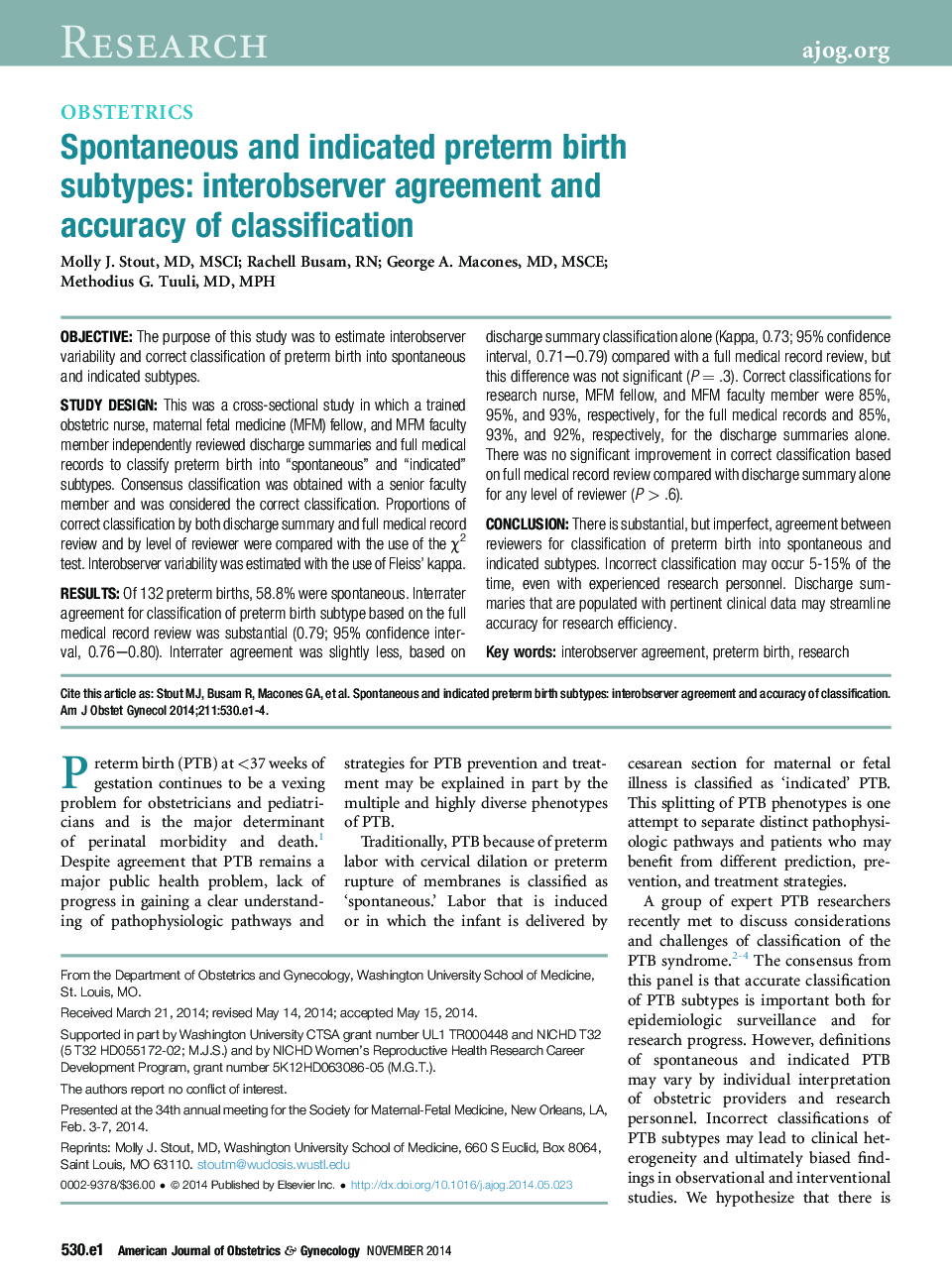| Article ID | Journal | Published Year | Pages | File Type |
|---|---|---|---|---|
| 6145529 | American Journal of Obstetrics and Gynecology | 2014 | 4 Pages |
ObjectiveThe purpose of this study was to estimate interobserver variability and correct classification of preterm birth into spontaneous and indicated subtypes.Study DesignThis was a cross-sectional study in which a trained obstetric nurse, maternal fetal medicine (MFM) fellow, and MFM faculty member independently reviewed discharge summaries and full medical records to classify preterm birth into “spontaneous” and “indicated” subtypes. Consensus classification was obtained with a senior faculty member and was considered the correct classification. Proportions of correct classification by both discharge summary and full medical record review and by level of reviewer were compared with the use of the Ï2 test. Interobserver variability was estimated with the use of Fleiss' kappa.ResultsOf 132 preterm births, 58.8% were spontaneous. Interrater agreement for classification of preterm birth subtype based on the full medical record review was substantial (0.79; 95% confidence interval, 0.76-0.80). Interrater agreement was slightly less, based on discharge summary classification alone (Kappa, 0.73; 95% confidence interval, 0.71-0.79) compared with a full medical record review, but this difference was not significant (P = .3). Correct classifications for research nurse, MFM fellow, and MFM faculty member were 85%, 95%, and 93%, respectively, for the full medical records and 85%, 93%, and 92%, respectively, for the discharge summaries alone. There was no significant improvement in correct classification based on full medical record review compared with discharge summary alone for any level of reviewer (P > .6).ConclusionThere is substantial, but imperfect, agreement between reviewers for classification of preterm birth into spontaneous and indicated subtypes. Incorrect classification may occur 5-15% of the time, even with experienced research personnel. Discharge summaries that are populated with pertinent clinical data may streamline accuracy for research efficiency.
